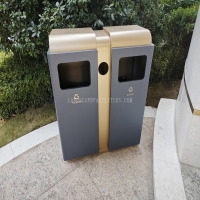Welcome to the website for landscape facilities products and knowledge.
What is the impact of the bin’s design on local wildlife and ecosystems?
The design of waste bins plays a crucial yet often overlooked role in shaping local wildlife behavior and ecosystem health. Poorly designed bins can attract scavengers like raccoons, foxes, and birds, disrupting natural foraging patterns and increasing human-wildlife conflicts. Open or easily accessible bins may lead to litter scattering, contaminating soil and water sources, while improperly sealed containers can become death traps for small animals.
Conversely, wildlife-resistant bins with secure lids, durable materials, and ergonomic shapes minimize ecological disruption. Innovations like weighted lids or locking mechanisms deter animals without harming them, while elevated designs prevent ground-dwelling species from accessing waste. Sustainable materials also reduce long-term environmental impact, preventing microplastic leakage into ecosystems.
Urban planners increasingly recognize that thoughtful bin design balances waste management efficiency with biodiversity preservation. By integrating animal behavior research into product development, cities can mitigate negative impacts while fostering coexistence between urban infrastructure and natural ecosystems. The shift toward ecologically intelligent bin designs represents a small but meaningful step in creating more harmonious human-environment interactions.
Related search:

Recommendation
Double-bucket garbage bin, outdoor, metal, multi-color, powder-coated, double-bucket trash can